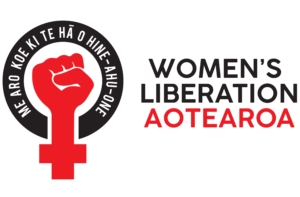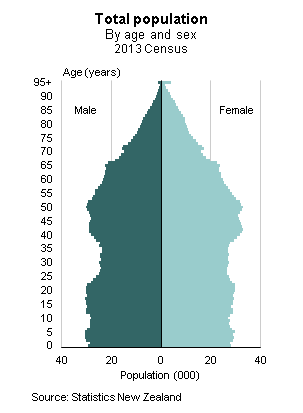Statistic NZ’s consultation on sex, gender, sexuality: deadline Fri 20 January 2023
By: Karolyn
15 January 2023
NZ Census 2023
Statistics NZ is still open to feedback on its inclusion of gender ID and ‘sexual identity’ in the upcoming 2023 census. Census forms will be going out some time in February for collection in March. They prefer online completion of the census, though it will still be possible to fill out a paper form.
Tuesday 7 March 2023 is Census Day Ko te Rātū 7 Poutūterangi 2023 te Rā Tatauranga
“But you can do the census as soon as you get your forms and instructions. Stats NZ will start delivering these in February 2023.”
Extended Consultation on Sex, Gender and Sexuality in 2023 census
“The four sex and gender concepts to be covered as part of this consultation are: gender, sex at birth, sexual identity, and variations of sex characteristics.”
There are some positives in the current guidelines, as well as some contentious issues. The contentious issues are in part the result of the changes to NZ’s Birth, Deaths, Marriages and Relations Registration Act that enables sex self ID in order to change the sex classification recorded on a birth certificate. Now the legal fiction that sex can be changed has been extended. This is at odds with the biological reality that sex (male or female) cannot be changed.
It is good that ‘sex at birth’ remains as a question in the census.
This enables some statistical comparisons between birth sex and sex/gender self ID.
They also will use some other data (not sure what) that can be used to add to the statistics recorded in the census. But this could enable some statistics based on evidence that is not publicly available, that shows how many people have legally changed their sex. The guidelines state that the only term to be used in the birth sex question, other than male/female, is ‘neither’.
“Sex is a flat classification with two categories:
1 Male / Tāne
2 Female / Wahine.”
They might include a ‘neither’ option for those whose sex could not be identified at birth. This is to be differentiated from the term ‘intersex’, which includes ‘variations of sex characteristics’. The guidelines says only
Some of the contentious issues include:
The definition of ‘sex’ used, which claims that a person’s sex can change throughout their lifetime and can differ from the sex recorded at birth. In NZ law the legal fiction that a person’s sex can change is at odds with the biological reality.
This has become problematic because the recent legal changes to the Birth Deaths and Marriages law, enabling sex self ID, and changes to birth certificates has extended a legal fiction (that sex can change), which is at odds with biology. The reality is that sex is set at conception and cannot be changed in the course of a lifetime.
It is important for the gathering of statistics that sex, male/female. Remains the default classification.
This is important for the gathering of data on the sex pay gap, health issues, sport participation, work place issues, sexual assault and rape, and much more.
The question on transgender status then enables the use of the biological terms ‘male’ and ‘female’ to be used to apply to transgender self ID. Plus, they differentiate transgender man/woman from ‘cisgender’ man/woman.
This validates the term ‘cisgender’, which many of us to not accept. It relegates women especially into a subcategory of woman on a par with males who ID as women. This creates confusion with female sex-based rights, services and protections.
The question on sexual orientation includes ‘sexual identity’ as an aspect of sexual orientation. This enables males to self ID as lesbians, and females to self ID as gay men.
This validates the claims by some men that they can be lesbian, which has some negative impacts on lesbians. Lesbians are increasingly pressured to accept males in their dating pool. It enables people to attack lesbians as being transphobic for saying they are same-sex attracted, not same gender attracted.
The standards use the terms cisgender man/woman and transgender man/woman
‘another gender’
‘prefer not to say’
They use the terms ‘male’ and female’ to incorrectly be used for gender ID. eg on the question for transgender status.
Combined Census Model
Consultation is asking for feedback on the combined census model.
Statistics NZ has three main methods for filling in gaps in census responses. They can use:
- “historical census responses (for sex at birth and gender this potentially includes 2013 or 2018 Census responses to the question, ‘Are you Male/Female?’ (with no clarification of what that meant). Previous censuses did not ask about sexual identity or variation of sex characteristics.)
- admin data (information taken from an admin data source)
- statistical imputation (We use the term ‘imputation’ to refer to the replacement of missing information with values from a statistical process, in contrast to our methods of sourcing real values from admin or historical census data).”
Links for Consultation and related Sex, Gender and sexuality
You can use a link at the above link to an online feedback form or email your responses to an addy provided.
The feedback form and email addy are available here
The Standards being used for the 2023 Census are available here
Standards for gender, sex, and variations of sex characteristics here.
Definitions used in the guidelines:
Sex
Sex is based on a person’s sex characteristics, such as their chromosomes, hormones, and reproductive organs. While typically based upon the sex characteristics observed and recorded at birth or infancy, a person’s sex can change over the course of their lifetime and may differ from their sex recorded at birth.”
“Sex characteristics
Sex characteristics refer to each person’s physical features relating to sex, including genitalia and other sexual and reproductive anatomy, chromosomes, hormones, and secondary physical features emerging from puberty.”
“Sex at birth
Sex at birth refers to the sex recorded at a person’s birth (for example, what was recorded on their birth certificate). Sex at birth may also be understood as sex assigned at birth. This standard uses sex at birth as the operational definition for data on sex.”
“sex – is based on a person’s sex characteristics, such as their chromosomes, hormones, and reproductive organs. While typically based upon the sex characteristics observed and recorded at birth or infancy, a person’s sex can change over the course of their lifetime and may differ from their recorded at birth.”
“sex characteristics – refer to each person’s physical features relating to sex, including genitalia and other sexual and reproductive anatomy, chromosomes, hormones, and secondary physical features emerging from puberty.”
“sexual orientation – covers three key aspects: sexual attraction, sexual behaviour, and sexual identity. These are related – sexual orientation is generally based on sexual attraction; sexual attraction can result in different sexual behaviours and sexual identities (Pega et al, 2013).”
“sexual attraction – refers to sexual interest in another person. Sexual attraction is having sexual feelings towards someone. A person may be attracted to one specific gender or sex, to more than one gender or sex, or to no one.”
“sexual behaviour – how a person behaves sexually. It is whether they have sexual partners of another gender or sex, the same gender or sex, or refrain from sexual behaviour.”
“sexual identity – refers to how a person thinks of their own sexuality and which terms they identify with. Sexual identity terms include lesbian, gay, straight, asexual, takatāpui, bisexual, or pansexual, among others.”
to enable the reader to return home when viewing on a mobile device. Any links can be made by highlighting the relevant text and clicking the chain icon above, then typing the url into the field that appears.
LINKS:
https://www.census.govt.nz/
https://www.stats.govt.nz/consultations/sex-at-birth-and-gender-methodology-for-the-2023-census-consultation/
https://forms.office.com/Pages/ResponsePage.aspx?id=c48weNzMKkKplqAW2tn-pQ06NqpDyaBBrxKmKozeGtpUM1o2SE9SSjdCU1JTVEI1NVBIRFg3N1ROOC4u
https://www.stats.govt.nz/methods/data-standard-for-gender-sex-and-variations-of-sex-characteristics/
https://www.stats.govt.nz/methods/data-standard-for-gender-sex-and-variations-of-sex-characteristics/
UPDATED: 19 January 2023


Leave a Reply
Want to join the discussion?Feel free to contribute!